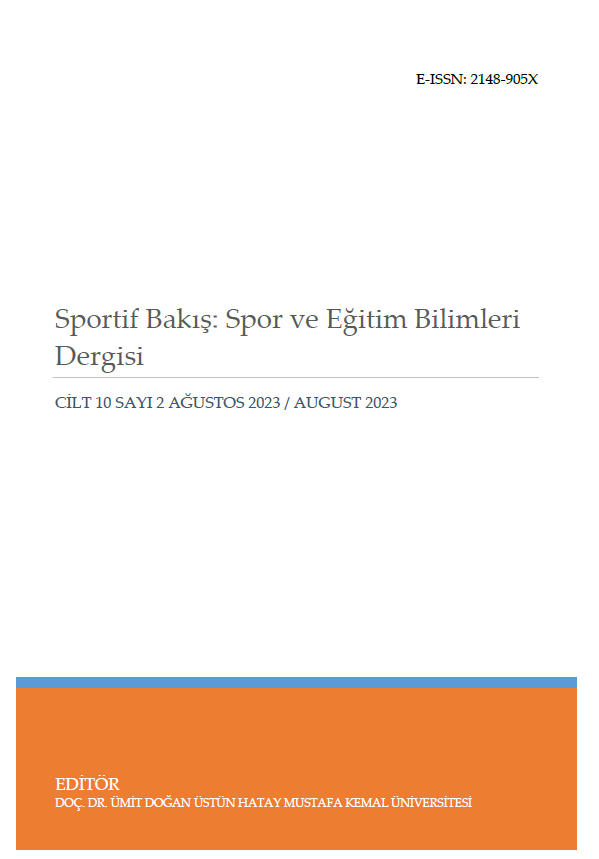Investigation of FTP, VO2max and Anaerobic Threshold Variables of Cyclists with Special Needs: A Case Study
Investigation of FTP, VO2max and Anaerobic Threshold Variables of Cyclists with Special Needs: A Case Study
Author(s): Nuray Satilmiş, Duran Akbaş, Akan Bayrakdar, Gökmen Kilinçarslan, Işık BayraktarSubject(s): Health and medicine and law, Sports Studies
Published by: Dumlupınar Üniversitesi - Beden Eğitimi ve Spor Yüksekokulu
Keywords: FTP; para cycling; Paralympic cyclist; special requirement; VO2max;
Summary/Abstract: The participation of individuals with special needs in performance sports has been increasing from past to present. As in athletes with normal development, stages are planned and implemented in accordance with the goals of high-level performance sports. This study aims to determine the functional threshold power (FTP), VO2max and anaerobic threshold values of a cyclist with special needs to create performance prediction for athletes in similar disability groups. Fırat Uğur, a 26-year-old athlete with special needs who has been participating in cycling competitions for three years and has a body weight of 68 kg and a height of 180.5 cm, participated in the current study. In the findings obtained from the study, the normalized power value of the athlete was found as 204.3 watts, the FTP value as 204.3 watts and the relative power value as 3.00 watts / kg. The athlete's VO2max value was 48.3 ml/kg/min; VO2max load was 298 watts, and VO2max heart rate was 175 beats/min, anaerobic threshold VO2 value was 24.7 ml/kg/min, anaerobic threshold load was 103 watts and anaerobic threshold heart rate was 127 beats/min. When the research findings of the cyclists with special needs were compared with the results obtained from the current study, Fırat Uğur's findings were at lower levels. Considering that the athlete has only participated in competitions as a performance athlete for three years, it can be predicted that he will increase his performance level in the following years. It is recommended that the athlete's training be prepared according to the findings obtained and that the performance development be followed with measurements to be made at regular intervals
Journal: Sportif Bakış: Spor ve Eğitim Bilimleri Dergisi
- Issue Year: 10/2023
- Issue No: 2
- Page Range: 112-119
- Page Count: 8
- Language: English

